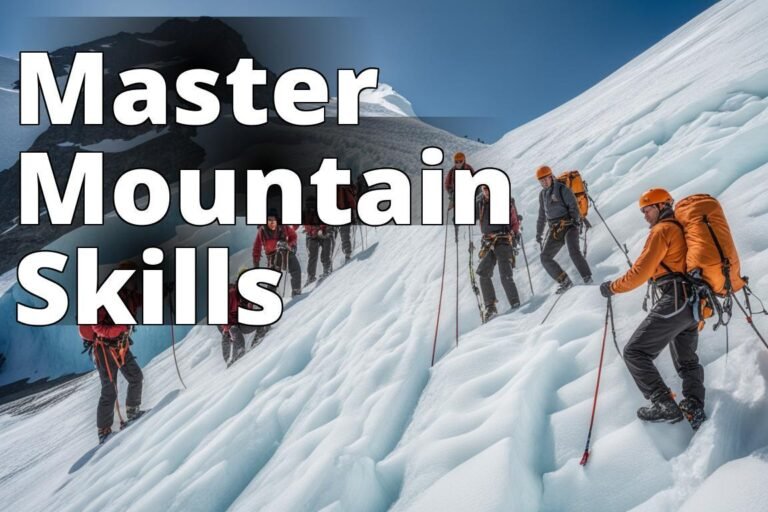How to Choose Gaiters
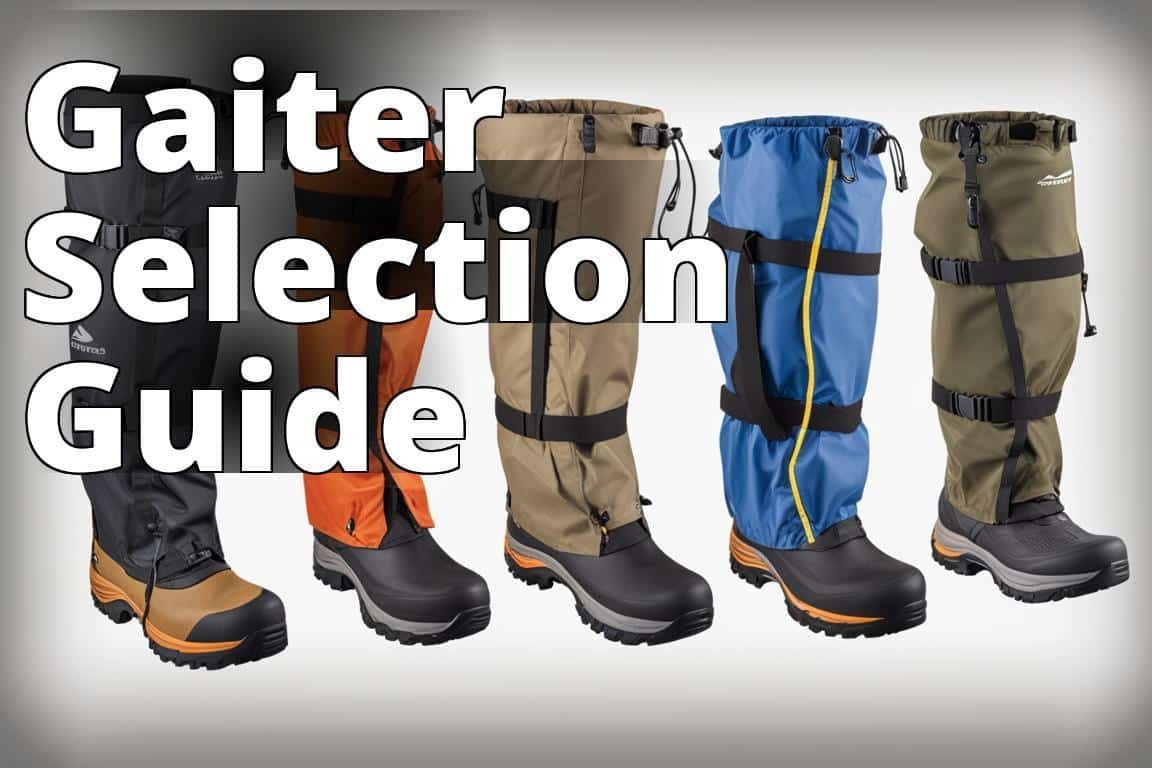
When it comes to traversing the great outdoors, whether you’re knee-deep in snow or crossing through a muddy trail, gaiters are an essential piece of gear that often go overlooked. Far from being a mere accessory, the right gaiters can be the difference between a comfortable adventure and a miserable one. This article is not just about choosing gaiters; it’s about understanding their importance, knowing the nuances of their design, and learning how to use them effectively to enhance your outdoor experiences.
Learn About Choosing and Using Gaiters
- Types of gaiters: low, mid, and high gaiters.
- Gaiter material: choose between nylon, Gore-Tex, or eVent.
- Gaiter fit: ensure a snug fit around your calf and over your footwear.
Types of Gaiters
Let’s dive right into the heart of the matter: the types of gaiters. Broadly speaking, gaiters are categorized based on the activities they are designed for hiking, running, mountaineering, and even casual use.
- Hiking Gaiters: These are your all-rounders. Designed to keep debris, water, and snow out of your boots, they’re perfect for most trails.
- Running Gaiters: Sleek and lightweight, these gaiters are made to fit snugly around running shoes, protecting against small rocks and sand.
- Mountaineering Gaiters: The heavy-duty option, these are made for deep snow and ice, offering the highest level of protection and durability.
- Casual Gaiters: For those who need basic protection in mild conditions, casual gaiters are a minimalist’s dream.
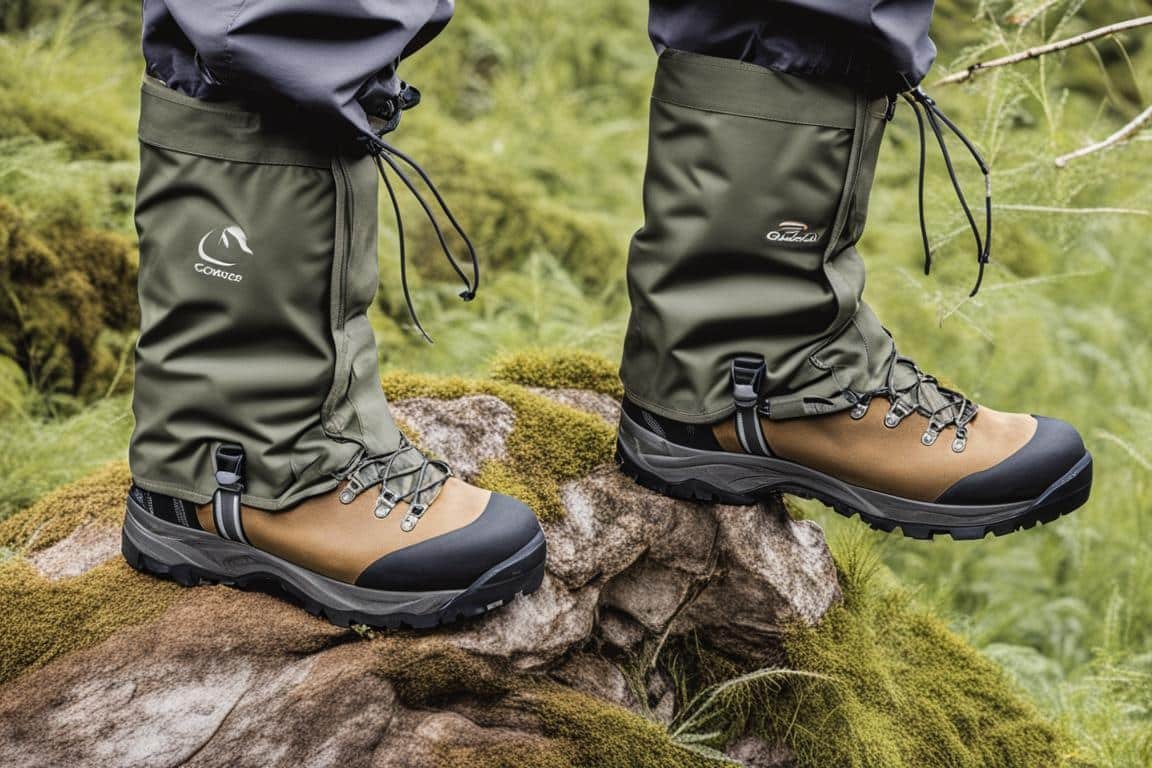
Understanding the specific demands of your adventure is crucial in selecting the right type. A running gaiter, for instance, would be ill-suited for a snowy mountaineering expedition.
Gaiter Length
Gaiter length plays a pivotal role in the level of protection you receive. There are generally three lengths to choose from:
- Low: Ending just above the ankle, low gaiters are ideal for keeping out trail debris during dry conditions.
- Mid: Extending to the mid-calf, these offer a balance between protection and comfort, suitable for moderate conditions.
- High: High gaiters reach nearly to the knee, providing maximum coverage and are best for deep snow or heavy brush.
Choosing the right length is a balancing act between the conditions you expect to face and the level of mobility you wish to maintain.
Gaiter Material
The material of your gaiters will dictate their breathability, waterproofing, and durability. You’ll find them in a range of materials, from lightweight, breathable fabrics suitable for dry, warm conditions to heavy-duty, waterproof materials for snow and rain.
- Breathable fabrics like Gore-Tex are great for active use in varied conditions, offering a balance between water resistance and ventilation.
- Non-breathable, heavy-duty materials are typically used for mountaineering gaiters, prioritizing durability and waterproofing over comfort in warm weather.
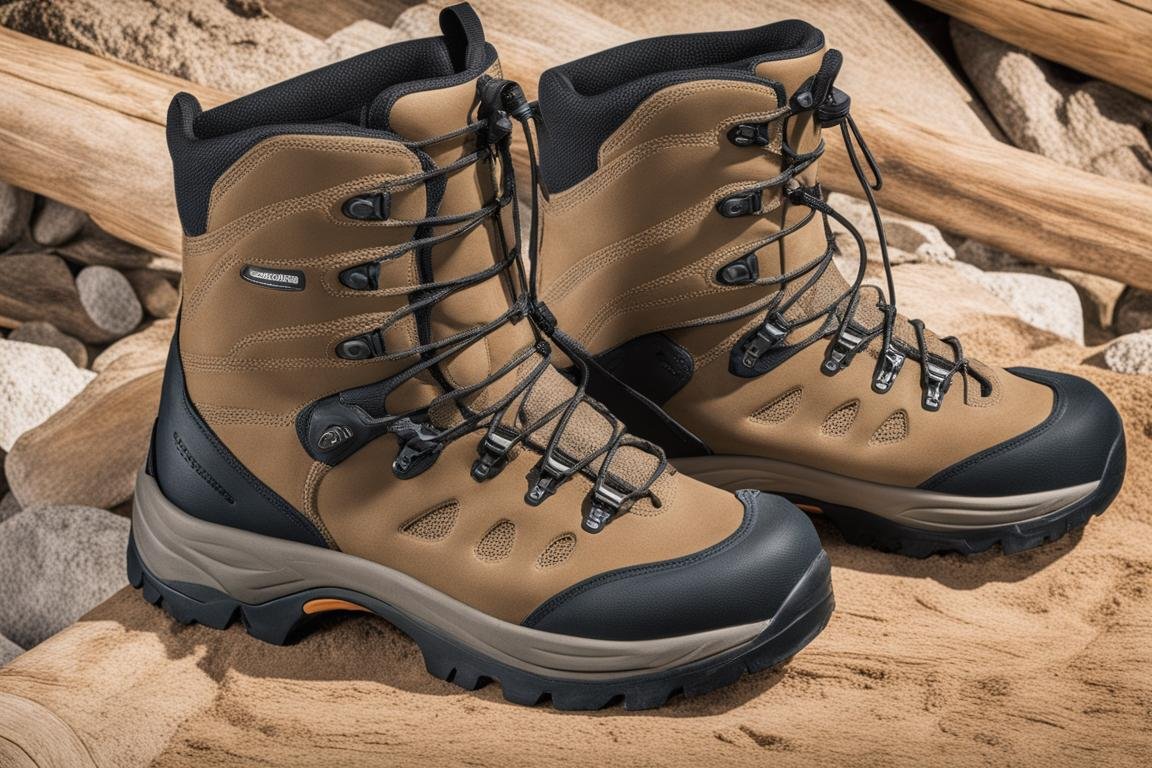
Material choice can significantly impact your comfort and protection, so consider your environment carefully.
Gaiter Fit
A good fit is non-negotiable. Gaiters should hug your boots and lower leg snugly but not so tight as to impede circulation or movement. Most gaiters come with adjustable straps, buckles, or hooks to help achieve a secure fit. Remember, a poorly fitting gaiter can let in everything it’s supposed to keep out.
Gaiter Closures
The closure system of a gaiter can vary from Velcro to zippers to snaps. Velcro closures are common for their simplicity and reliability, especially in muddy or icy conditions where zippers might fail. However, zippers can offer a cleaner look and a tighter seal, albeit with some maintenance required to keep them functioning well.
Gaiter Instep Straps
The instep strap is what keeps the gaiter anchored to your shoe or boot, and it needs to be durable. Look for straps made of sturdy materials like nylon or even metal. The ability to adjust or replace these straps is a bonus, as they tend to wear out with regular use.
Gaiter Boot Attachment
Different gaiters have different methods for attaching to boots, from hooks that latch onto laces to underfoot straps that keep the gaiter in place. Ensuring your gaiters and boots are compatible is crucial for effective use. For example, some heavy-duty mountaineering gaiters are designed to work specifically with bulky boots.
Gaiter Price
Price is always a consideration, but try not to skimp on gaiters if you’re heading into challenging conditions. While cost doesn’t always correlate to quality, investing in a well-reviewed, durable pair from a reputable brand can save you from discomfort or even danger in the long run.
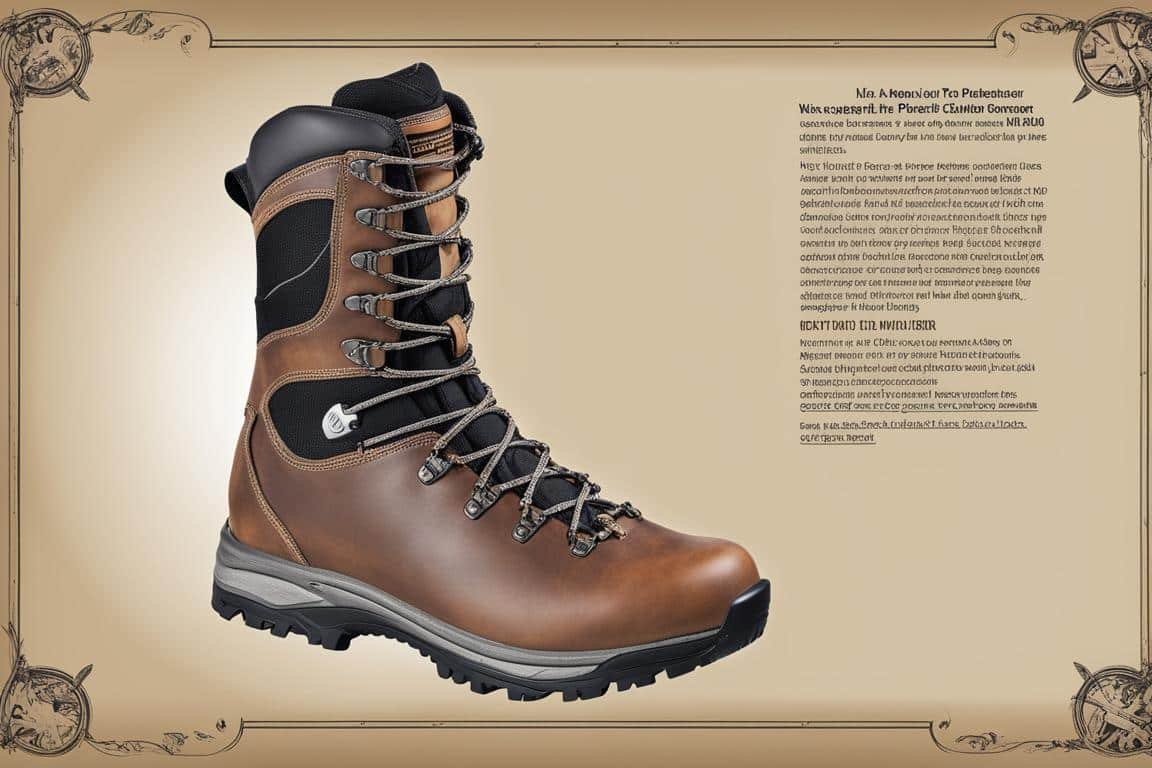
For detailed insights on gaiter features and recommendations, REI’s expert advice on gaiters is an invaluable resource.
Putting Gaiters On Correctly
The best gaiters in the world wont do you any good if theyre not put on correctly. Heres a quick rundown:
- Open the gaiter fully. This makes it easier to wrap around your leg and boot.
- Hook or attach the front to your laces. Make sure it’s secure but not overly tight.
- Wrap the gaiter around your leg and secure the closure. Ensure it’s snug but comfortable.
- Adjust the instep strap under your foot. This should be tight enough that the gaiter won’t move but not so tight that it strains the material.
Remember, practice at home before heading out. The last thing you want is to be fumbling with your gaiters when a storm hits.
Getting the Best Performance Out of Your Gaiters
To maximize the performance of your gaiters, consider these insider tips:
- Regular maintenance is key. Keep closures clean and replace worn-out straps.
- Pair with the right boots. Not all gaiters fit all boots equally well. Testing the combination before your trip can prevent unwanted surprises.
- Adjust as needed. Conditions on the trail can change. Don’t hesitate to adjust your gaiters for comfort and protection.
Incorporating gaiters into your gear setup can significantly improve your outdoor experiences. Whether you’re slogging through snow, crossing streams, or just trying to keep pebbles out of your shoes, the right gaiters can be game-changers. And remember, while choosing the right pair is crucial, so is knowing how to use them effectively. With the insights and tips provided here, you’re well on your way to making an informed decision that will enhance your adventures for years to come.
For further reading on how to enhance your outdoor adventures, consider exploring our other resources:
- How to Hike with Your Dog
- Best Hand Warmers for Hikers
- Best Trail Running Gear Checklist
- Best Women’s Waterproof Hiking Pants
- Best Smartwool Hiking Socks
- How to Survive Lost in the Wilderness
Ultimately, the best gear is the gear that works for you; gaiters are no exception. By considering the types, materials, fit, and specific features relevant to your needs, you can select gaiters that will protect you from the elements, enhance your comfort, and possibly even save your adventure from turning into a misadventure.
FAQs
Question: Who should consider using gaiters when hiking?
Answer: Hikers, backpackers, and outdoor enthusiasts can benefit from using gaiters.
Question: What are the key factors to consider when choosing gaiters?
Answer: Look for gaiters that are waterproof, durable, breathable, and the right length for your activity.
Question: How should gaiters be properly fitted and worn?
Answer: Ensure gaiters fit snugly around your calf and over your footwear to prevent debris from entering.
Question: What are the benefits of using gaiters during outdoor activities?
Answer: Gaiters protect your lower legs and footwear from water, mud, snow, rocks, and debris.
Question: How do gaiters enhance comfort and performance during hikes?
Answer: Gaiters keep your feet dry, warm, and free from irritation, allowing you to focus on enjoying the hike.
Question: Isn’t it cumbersome to wear gaiters during outdoor activities?
Answer: Modern gaiters are lightweight, adjustable, and easy to put on, ensuring comfort and functionality.








